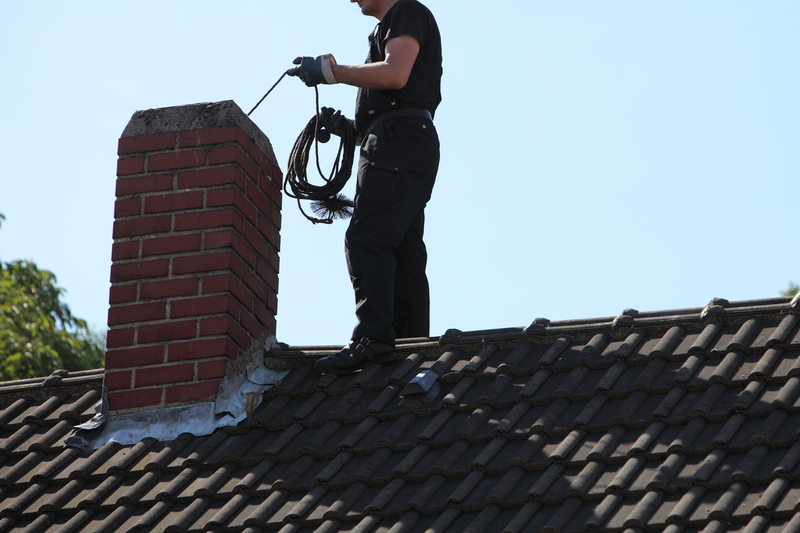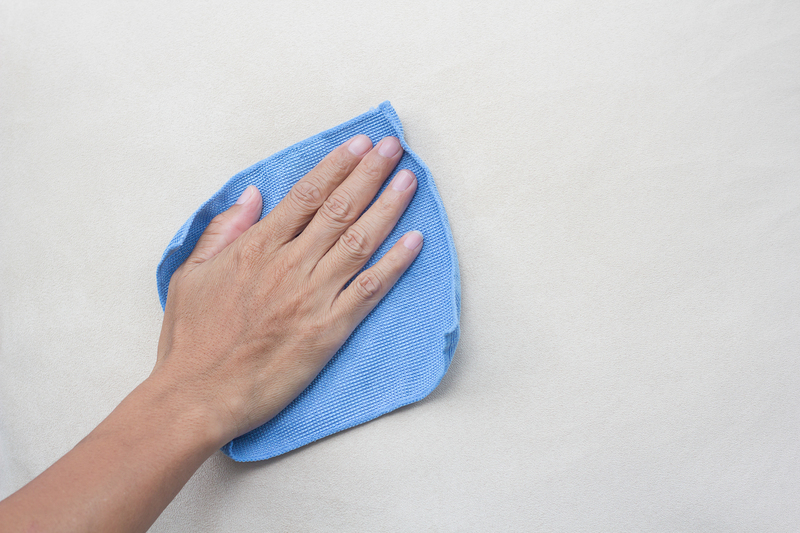Discover Simple Steps to Remove Mould from Window Sills
Posted on 21/09/2025
Discover Simple Steps to Remove Mould from Window Sills
Mould growth on window sills is a common issue faced by homeowners around the world. With the right steps, you can easily prevent and remove mould from window sills, ensuring your home remains healthy and mould-free. In this comprehensive guide, you'll learn simple steps to remove mould from window sills, as well as proactive solutions to keep mould at bay for good.

Why Does Mould Grow on Window Sills?
Understanding why mould grows on your window sills is the first step in managing it. Mould thrives in moist, warm environments with little ventilation. Typical causes of mould growth on window sills include:
- Condensation: Moist air inside your home can condense on cold window surfaces, creating the perfect breeding ground for mould.
- Poor Ventilation: Areas that lack proper airflow allow humidity to linger, supporting mould development.
- Leaky Windows: Water seepage due to damaged seals or frames introduces moisture that attracts mould spores.
- Lack of Sunlight: Windows in shaded or poorly lit rooms are more susceptible as sunlight naturally inhibits mould growth.
Recognizing these causes helps you not only remove mould from window sills but also prevent its return.
Health Risks Associated with Mould on Window Sills
Mould exposure can lead to a variety of health problems, particularly for those with allergies, asthma, or weakened immune systems. Common symptoms caused by mouldy window sills include:
- Respiratory issues (coughing, wheezing)
- Nasal congestion and sinus irritation
- Eye discomfort or skin rashes
- Persistent headaches
- Fatigue
Addressing mould removal as soon as possible is crucial to protect your household from these issues.
Identifying Mould on Window Sills
Mould can be surprisingly sneaky. Sometimes it's hidden in the corners of window frames or beneath layers of paint. Look for:
- Black, green, brown or white patches on the sill or frame
- Musty odours near the window area
- Dampness or water stains
- Flaking paint or warped wood
If you notice any of these signs, it's time to take immediate action with our simple steps to clean mould from window sills.
Essential Tools and Materials for Mould Removal
Before you start, gather these items:
- Protective gloves (preferably rubber or latex)
- A face mask to prevent inhaling spores
- Safety goggles
- Cleaning cloths or disposable towels
- Soft-bristled brush or old toothbrush
- Spray bottle
- Bucket of warm water
- Mild dish soap or detergent
- White vinegar, hydrogen peroxide, or baking soda
- Optional: Commercial mould remover
- Disinfectant spray
Having these materials at hand not only makes the job easier but also ensures it's done safely and effectively.
Step-By-Step Process: How to Remove Mould from Window Sills
Follow these simple steps to effectively remove mould from window sills:
Step 1: Protect Yourself and the Area
- Open the windows to provide ventilation and limit inhalation of airborne spores.
- Put on gloves, a mask, and goggles for personal protection.
- Lay old towels or a plastic sheet beneath the window to catch drips and debris.
Step 2: Remove Loose Mould Spores
- Use a dry cloth or a vacuum with a HEPA filter to gently remove any loose mould spores. Be careful not to spread them to other surfaces.
- Dispose of the vacuum bag or cloths immediately.
Step 3: Prepare Your Cleaning Solution
- Vinegar Method: Mix equal parts white vinegar and water in a spray bottle.
- Hydrogen Peroxide Method: Use 3% hydrogen peroxide, undiluted, for stronger cleaning power.
- Baking Soda Paste: Mix one tablespoon of baking soda with water to form a paste. This is ideal for spotting stubborn stains.
- Alternatively, choose a commercial mould remover designed for household use.
Step 4: Apply the Cleaner to Mouldy Areas
- Spray the affected areas generously with your chosen solution.
- Allow the solution to sit for 10-15 minutes to penetrate and break down the mould.
Step 5: Scrub Away the Mould
- Using your soft-bristled brush or old toothbrush, gently scrub the window sill and frame.
- Repeat the process if mould remains.
- Wipe up residues with a damp cloth.
Step 6: Rinse and Dry Thoroughly
- Rinse the area with a clean, damp cloth to remove any cleaning solution.
- Use a dry towel to wipe the sill completely dry -- moisture encourages future mould growth!
Step 7: Disinfect and Prevent Future Mould
- Lightly spray the area with a disinfectant and allow it to air-dry.
- Consider applying a mould-inhibiting solution or primer if your sills are wooden and prone to recurring mould.
Tip: Dispose of all used cleaning materials in a sealed bag immediately after cleaning to avoid spreading mould spores.
Alternative Natural Methods to Clean Mould from Window Sills
If you prefer chemical-free options, there are several eco-friendly ways to clear mould from window sills naturally:
- Tea tree oil solution: Mix one teaspoon of tea tree oil with one cup of water. Spray on affected areas and leave for several hours before wiping off.
- Lemon juice and salt: Combine lemon juice with salt to form a paste. Apply to mouldy spots, leave for 5-10 minutes, then scrub away.
Both methods are safe, effective, and leave your home smelling fresh.
Prevent Mould from Returning: Long-Term Solutions
To keep your window sills mould-free, follow these proactive steps:
- Improve ventilation: Open windows regularly, especially in bathrooms and kitchens, to allow fresh air circulation.
- Use a dehumidifier: Especially in damp climates or during humid seasons, this helps maintain appropriate indoor humidity levels (ideally 30%-50%).
- Fix window leaks promptly: Address any cracks, damaged seals, or condensation buildup to prevent moisture ingress.
- Wipe down sills frequently: Routine cleaning and drying keep spores from establishing colonies.
- Trim vegetation: If outside plants are close to your windows, trim them back to let in sunlight and discourage dampness.
- Paint with mould-resistant paint: Especially recommended for wooden sills in older homes.
Adopting these habits will greatly reduce the risk of window sill mould in your home.
When to Call a Professional for Mould Removal
While most minor infestations of window sill mould can be handled with the DIY steps above, there are times when professional help is needed:
- The affected area covers more than 1m2 (about 10 square feet).
- Mould keeps returning quickly after cleaning.
- There is evidence of structural damage from moisture or leaks.
- You suspect the presence of toxic black mould (Stachybotrys chartarum).
- Any household members have severe allergies or respiratory conditions.
Professionals have the equipment and expertise to safely eliminate large or stubborn mould infestations on window sills and address underlying moisture issues.

Frequently Asked Questions About Removing Mould from Window Sills
Can vinegar kill mould on window sills?
Yes, vinegar is highly effective for most types of household mould, including those found on window sills. Its acidity kills many mould species and works as a natural disinfectant.
Is bleach good for removing mould from window frames?
While bleach can remove surface mould and discoloration, it does not penetrate porous surfaces like wood, allowing mould to regrow. Vinegar, hydrogen peroxide, or specialist products are more effective for lasting results.
How can I prevent condensation and mould on window sills in winter?
Use dehumidifiers, increase insulation, install double glazing, and ensure regular ventilation. Wiping away condensation each morning is also helpful.
Are there effective commercial products for mouldy window sills?
Yes, look for commercial mould removers labeled for household use, ensuring they are safe for surfaces and effective against a wide range of mould types.
Summary: Say Goodbye to Mould on Window Sills
Dealing with mould on your window sills doesn't have to be a daunting task. By following these simple steps to remove mould from window sills, using the right tools, and taking preventive measures, you can enjoy cleaner, healthier living spaces. Regular maintenance and attention to moisture sources will ensure your home stays mould-free year-round.
Ready to tackle mould on your window sills? Gather your supplies, follow the outlined plan, and restore your windows to their pristine, healthy state today!




